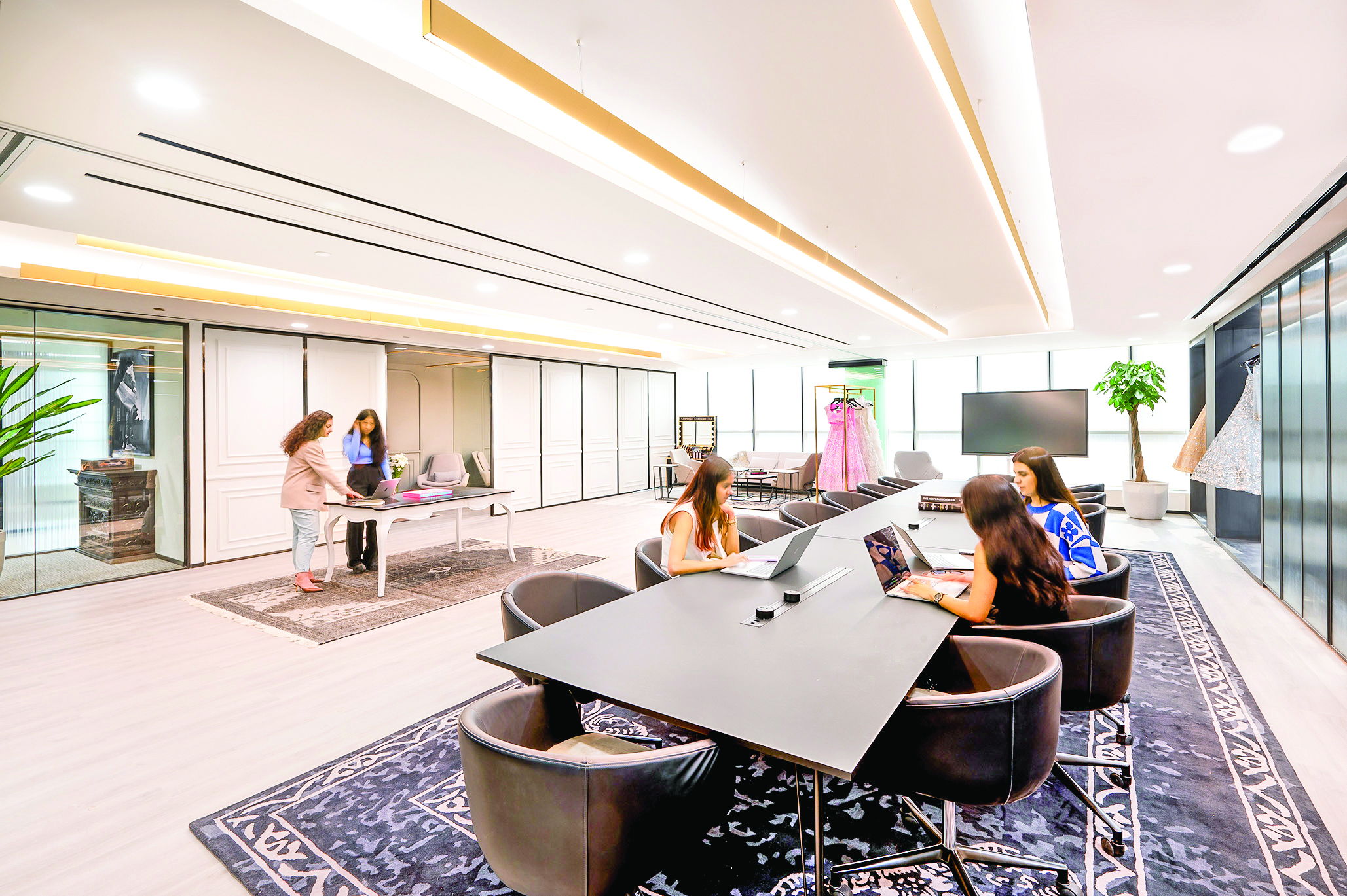Is your office a mere backdrop, or a dynamic engine driving your company’s aspirations? Aligning workplace design with your organisational vision is a strategic imperative for leadership teams seeking to unlock peak performance, innovation, and a thriving company culture. This alignment cannot be imposed from the top down but must be nurtured by creating an environment where employees are happier, healthier, and aligned with the organisation’s broader goals.
In today’s competitive business environment, the vision must resonate through every aspect of the workspace, facilitated not by mandates but through active collaboration that enhances employee productivity. If you were to look around your workplace, what are some of the things you would notice? What would your clients and others see? Above all, what would your employees see, and how would they feel about where they are working?
The workspace should speak for itself, and its design must help breathe life into it, supporting everyone’s needs. A well-planned design helps in building a sense of community and belonging among employees, empowering them to thrive and realise their full potential. Imagine spending eight hours of the day in a place bursting with synergy, positivity, and innovation. That’s how it feels to have an office or a workplace that aligns with the company’s organisational vision. With work taking on new forms such as hybrid, virtual, and collaborative modes, it is becoming more important to be intentional about workplace design.
The need for alignment between workplace design and organisational vision has never been more pressing. As businesses evolve and adapt to a rapidly changing world, so too must the spaces in which they operate. This alignment isn’t just about aesthetics—it’s about creating an environment that reflects and supports the company’s mission, values, and long-term objectives. When a workplace is designed with these factors in mind, it becomes a powerful tool for driving success, encouraging innovation, and maintaining a strong, cohesive culture.
Workplace design also amplifies cultural ethos, nurturing connections, and igniting innovation. It facilitates better interactions, encourages cross-departmental connections, and enhances employee engagement, motivation, and focus. This, in turn, contributes to a more productive and prosperous milieu. A lack of alignment in workplace design can significantly impact a company’s performance. For instance, adding segregated areas in an office where people thrive on collaboration can hamper this culture, affecting productivity, output, and the well-being of employees.
Moreover, the physical workspace can act as a tangible manifestation of a company’s brand and values. A thoughtfully designed office not only serves the functional needs of employees but also embodies the spirit of the organisation. This can be seen in companies like Google and Apple, where innovative and open workspaces reflect their commitment to creativity, collaboration, and pushing boundaries. Such environments are not only conducive to the work being done but also serve to attract and retain top talent, further driving the company’s success.
For example, Nestlé’s workplace design mirrors its employee-centric values and culture, signifying mutual respect and responsibility nurtured over the years. The hybrid workspace design caters to diverse working styles while encapsulating the brand’s essence of giving freedom and working flexibility to its employees. From the reception area’s architectural homage to Nestlé’s ‘Tree of Life’ to the café’s urban-inspired design promoting the idea of ‘Good Food, Good Life,’ every aspect of the workspace reflects Nestlé’s ethos.
The need of the hour is to focus on creating future-ready workplaces that provide an environment for businesses to thrive. Workplace design that works in tandem with the company significantly affects the company’s trajectory. The current decade has brought forth the inception of super-specialised businesses that provide niche services and cater to specific audiences. This means that their workplaces need to reflect their offerings and provide an environment to run their operations smoothly and let them prosper. To provide such a space, it is vital to consider the company’s values, culture, and ethos and respond appropriately. Taking the organisational vision of the company as a part of the design brief allows us to align it with their workplace design.
Finally, the concept of future-ready workspaces is essential in this alignment process. As businesses grow and technology advances, workplaces must be designed to evolve alongside these changes. This involves creating adaptable spaces that can easily accommodate new ways of working, from remote and hybrid models to the integration of AI and other emerging technologies. By anticipating these needs, companies can ensure that their workspaces remain relevant and supportive of their goals for years to come.
To conclude, by integrating core values and focusing on cultural diversity, workplace design can become an important tool in cultivating a conducive environment where employees can thrive, innovate, and contribute meaningfully to success. As organisations navigate the complexities of the modern workplace, they must invest in thoughtful and purpose-driven design—it can enable sustainable growth and prosperity and lead to better outcomes. A company’s leadership team plays a vital role in taking the necessary steps to realise their visions and bring them into reality. A collaborative approach with the company’s employees, stakeholders, and workplace designers can create an output unique to the company’s needs and culture.
Titir Dey, Global Managing Director, Space Matrix




